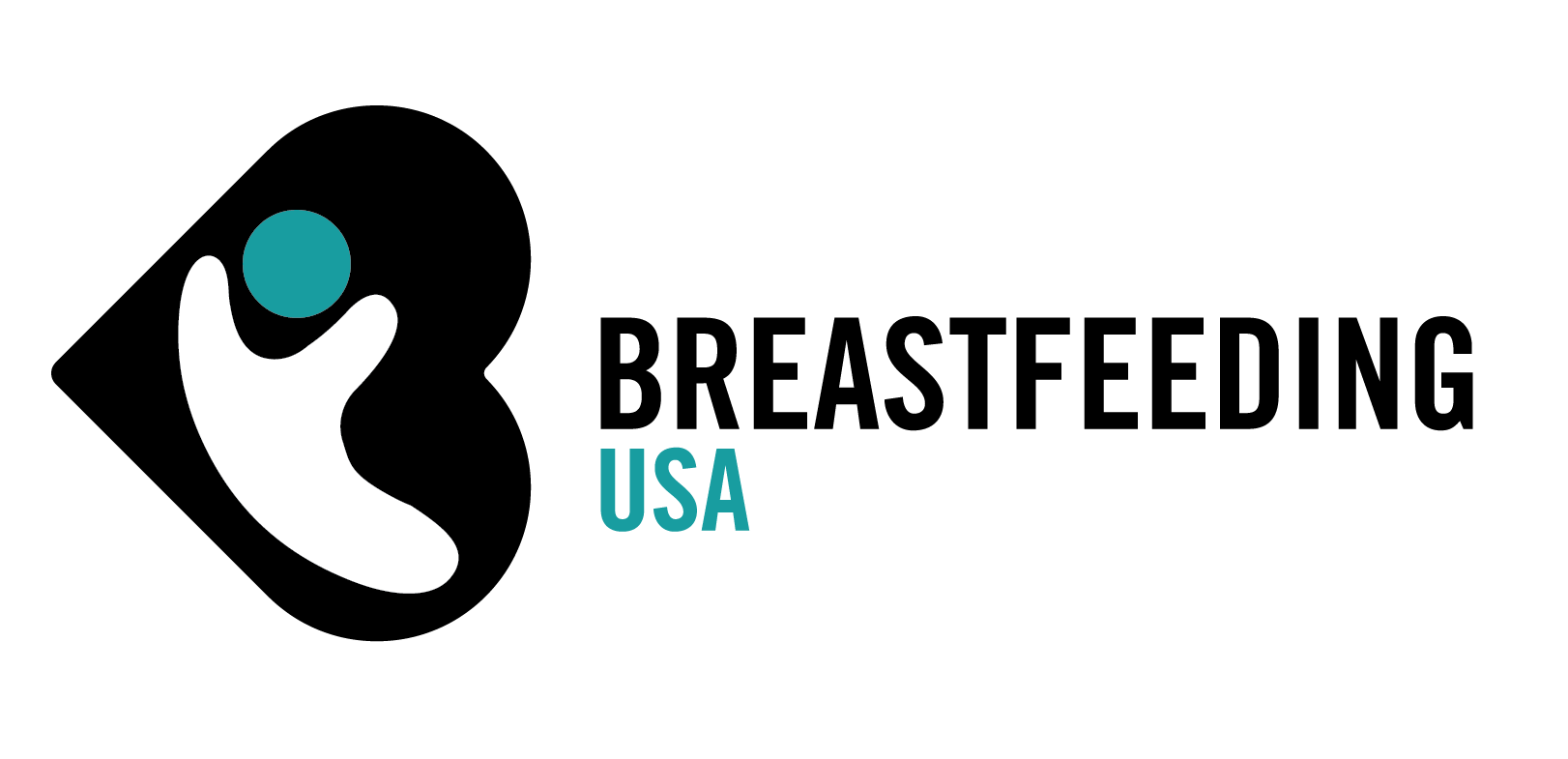By Nancy Mohrbacher, IBCLC, FILCA
Q: Why does my breastfed baby take at most 4 ounces (120 mL) from the bottle when my neighbor’s formula-fed baby takes 7 or 8 ounces (210-240 mL)? Am I doing something wrong?
A: You are not doing anything wrong. And in this case, more is not necessarily better. Formula-fed babies typically consume much more milk at each feeding than breastfed babies, but they are also more likely to grow into overweight children and adults.1,2 One large study (16,755 babies in Belarus) compared feeding volumes in formula-fed and breastfed babies and found that the formula-fed babies consumed 49% more milk at 1 month, 57% at 3 months, and 71% at 5 months.3 Australian research found that between 1 and 6 months of age breastfed babies consistently take on average around 3 ounces (90mL) at a feeding. (Younger babies with smaller tummies take less milk.)
Breastfed babies’ milk intake doesn’t increase from months 1 to 6 because their growth rate slows.4 As growth slows, breastfed babies continue to get bigger and heavier on about the same daily milk intake, averaging about 25 ounces (750 mL) per 24 hours.
Why do formula-fed babies drink so much more milk? There are several reasons:
The bottle flows more consistently. During the first 3 to 4 months of life, after swallowing, an inborn reflex automatically triggers suckling.5 Milk flows more consistently from the bottle than the breast (which has a natural ebb and flow due to milk ejections, or let-downs), so babies tend to consume more milk from the bottle at a feeding. Before this reflexive suckling is outgrown, babies fed by bottle are at greater risk of overfeeding.
Breastfeeding gives babies more control over milk intake. Not seeing how much milk is in the breast makes a breastfeeding mother less likely to coax her baby to continue after he’s full.3,6 As the breastfed baby grows and thrives, his mother learns to trust her baby to take what he needs from both breast and bottle and also solid foods when they are introduced later. One U.K. study found that between 6 and 12 months of age breastfeeding mothers put less pressure on their babies to eat solid foods and were more sensitive to their babies’ cues.7
More milk in the bottle means more milk consumed. In the Belarus study mentioned before, babies took more formula at feedings when their mothers offered bottles containing more than 6 ounces (180 mL).3
Mother’s milk and formula are metabolized differently. Formula-fed babies use the nutrients in formula less efficiently,8 so they may need more milk to meet their nutritional needs. Formula is also missing hormones, such as leptin and adiponectin, which help babies regulate appetite and energy metabolism.9,10 Even babies’ sleep metabolism is affected, with formula-fed babies burning more calories during sleep than breastfed babies.11
Q: If my baby takes more milk from the bottle than I can express at one sitting, does that mean my milk production is low?
A: See the previous answer. Babies commonly take more milk from the bottle than they do from the breast. The fast, consistent milk flow of the bottle makes overfeeding more likely. So if your baby takes more milk from the bottle than you express, by itself this is not an indicator of low milk production.
To reduce the amount of expressed milk needed and to decrease the risk of overfeeding, take steps to slow milk flow during bottle-feeding:
- Use the slowest flow nipple/teat the baby will accept.
- Suggest the feeder try holding the baby in a more upright position with the bottle horizontal to slow flow and help the baby feel full on less milk.
- Short breaks during bottle-feeding can also help baby “realize” he’s full before he takes more milk than needed.
References:
1 Arenz, S., Ruckerl, R., Koletzko, B., & von Kries, R. (2004). Breast-feeding and childhood obesity–a systematic review. International Journal of Obesity and Related Metabolic Disorders, 28(10), 1247-1256.
2Dewey, K. G. (2009). Infant feeding and growth. In G. Goldberg, A. Prentice, P. A., S. Filteau & K. Simondon (Eds.), Breast-Feeding: Early influences on later health (pp. 57-66). New York, NY: Springer.
3Kramer, M. S., Guo, T., Platt, R. W., Vanilovich, I., Sevkovskaya, Z., Dzikovich, I., et al. (2004). Feeding effects on growth during infancy. Journal of Pediatrics, 145(5), 600-605.
4Kent, J. C., Mitoulas, L. R., Cregan, M. D., Ramsay, D. T., Doherty, D. A., & Hartmann, P. E. (2006). Volume and frequency of breastfeedings and fat content of breast milk throughout the day. Pediatrics, 117(3), e387-395.
5Wolf, L. S., & Glass, R. P. (1992). Feeding and Swallowing Disorders in Infancy. Tucson, AZ: Therapy Skill Builders.
6Taveras, E. M., et al. (2004). Association of breastfeeding with maternal control of infant feeding at age 1 year. Pediatrics, 114(5), e577-583.
7Farrow, C., & Blissett, J. (2006). Breast-feeding, maternal feeding practices and mealtime negativity at one year. Appetite, 46(1), 49-56.
8Motil, K. J., Sheng, H. P., Montandon, C. M., & Wong, W. W. (1997). Human milk protein does not limit growth of breast-fed infants. Journal of Pediatric Gastroenterology and Nutrition, 24(1), 10-17.
9Li, R., Fein, S. B., & Grummer-Strawn, L. M. (2008). Association of breastfeeding intensity and bottle-emptying behaviors at early infancy with infants’ risk for excess weight at late infancy. Pediatrics, 122 Suppl 2, S77-84.
10Doneray, H., Orbak, Z., & Yildiz, L. (2009). The relationship between breast milk leptin and neonatal weight gain. Acta Paediatrica, 98(4), 643-647.
11Butte, N. F., et al. (2000). Energy requirements derived from total energy expenditure and energy deposition during the first 2 y of life. American Journal of Clinical Nutrition, 72(6), 1558-1569.
Nancy Mohrbacher, IBCLC, FILCA
Used with permission. Article originally appeared on the website Breastfeeding Reporter (www.nancymohrbacher.com), where you can find complete article licensing information.
